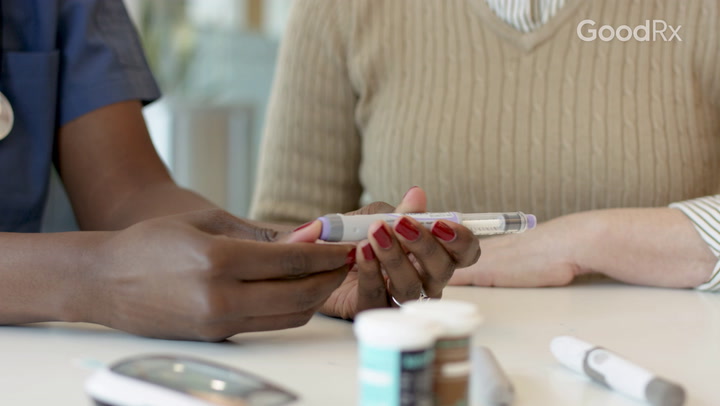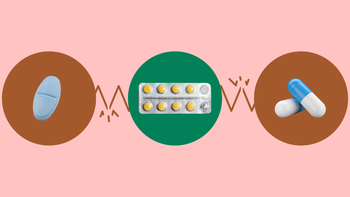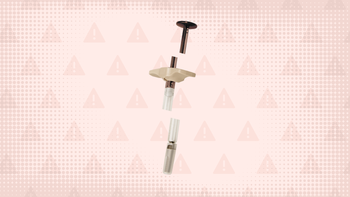
How Do You Test for Rheumatoid Arthritis (RA)? Here’s How It Is Diagnosed
Key takeaways:
Rheumatoid arthritis (RA) is an autoimmune condition that causes pain, stiffness, and swelling in your joints. It can be hard to diagnose because there isn’t one single test for it.
An RA diagnosis is based on your symptoms and a physical exam. Blood and imaging tests may help provide clues, but they can’t confirm or rule out RA.
For many people, a diagnosis of RA takes time. If you have RA symptoms, let a healthcare professional know. They can start testing and refer you to a rheumatologist if needed.
Table of contents
Rheumatoid arthritis (RA) is a type of arthritis. It causes painful swelling in your joints — especially in your hands and feet. RA is an autoimmune condition. When you have RA, your immune system causes too much inflammation in your body and it impacts your joints. This sets it apart from more common types of arthritis like osteoarthritis, which is due to wear and tear as you get older.
RA can be hard to diagnose since there’s no single test for it. In fact, if your symptoms and physical exam point to RA, you may be diagnosed without any tests at all.
How is rheumatoid arthritis (RA) diagnosed?
Diagnosing rheumatoid arthritis (RA) can involve several different tests and evaluations, including:
A physical examination
Your symptom history
Blood work
X-rays
Ultrasounds
MRIs
To diagnose RA, healthcare professionals use clues from your symptoms and physical exam. Blood tests and imaging can give more information. But your symptoms and the physical exam are the most important parts of making the diagnosis.
Diagnosing RA is quite complex. For example, it’s possible to have RA even if your test results are normal (more on this below). And it’s possible to have abnormal test results and not have RA.
If that sounds confusing, that’s because it is. But rheumatologists (RA specialists) are trained to sort this all out.
What are the symptoms and physical exam findings of rheumatoid arthritis?
Common signs and symptoms of rheumatoid arthritis (RA) include:
Joint pain
Swollen joints
Joint stiffness (lasting 30 minutes or more a day)
Fatigue
Not sure if you’re at risk for rheumatoid arthritis (RA)? These signs and symptoms of RA can be a clue that it’s time to see a healthcare professional right away.
What RA medication works best? This guide to common RA medications can help you learn about your treatment options.
A comprehensive guide to arthritis: Here’s what distinguishes RA from other types of arthritis.
RA can affect almost any joint in your body, but it’s most common in your hands and feet. These symptoms need to last for at least 6 weeks before RA can be considered.
Of note, RA doesn’t usually cause back pain. It typically only affects one joint in your spine — at the top, near the base of your skull. When RA affects this joint, it may cause a headache near the back or bottom of your head, but not back pain.
What tests can help diagnose rheumatoid arthritis?
The following is a closer look at tests that can help when trying to diagnose rheumatoid arthritis (RA). But it’s important to remember that no single test can confirm or rule out RA. Your symptoms and physical exam findings are what matter most.
Blood tests
Two blood tests may help diagnose RA if the symptoms and physical exam also fit:
Rheumatoid factor (RF)
Anti-cyclic citrullinated peptide (anti-CCP)
Some people with RA have both positive RF and anti-CCP tests. A positive test means these substances are present in your blood. Some people only have one positive test. And about 1 in 4 people with RA don’t have any positive tests. When both blood tests are negative, it’s called seronegative rheumatoid arthritis. “Sero” means blood, so “seronegative” means that the blood tests are negative.
Some people who test positive for these markers don’t have RA. This is known as a false positive, which means the test result is incorrect. False positives can happen for other reasons. For example, chronic hepatitis C is one of many conditions that can also cause a positive RF. That’s why positive testing alone doesn’t mean you have RA. You must also have symptoms that match.
A positive anti-CCP test may mean you’re at an increased risk of developing RA in the future. It doesn’t mean that you have RA now. But if you later develop symptoms, it’s important to connect with your healthcare team.
X-rays
If the diagnosis is unclear, X-rays may help provide clues about RA. RA may damage joints in as little as 1 year if left untreated, and X-rays can show these joint changes. RA affects your joints in a unique way, so an X-ray can help support an RA diagnosis.
Magnetic resonance imaging (MRI)
For a more detailed view of your joints, an MRI may be a better option for some people. It may be helpful for people who have RA symptoms but no signs like swelling on a physical exam. But if your joints are clearly swollen during the exam, an MRI isn’t usually needed.
Ultrasound
This quick imaging test can detect inflammation in your joints. Ultrasounds are also helpful for people with symptoms of RA but a normal physical exam. Sometimes, your doctor can do an ultrasound during your physical exam. It’s also cheaper and faster than an MRI.
Who should be tested for rheumatoid arthritis?
If you’ve had symptoms of rheumatoid (RA) for more than 6 weeks, tell a healthcare professional. They’ll likely order blood tests and imaging to get things moving. More importantly, they can refer you to a rheumatologist to confirm your diagnosis.
Remember, negative tests don’t rule out RA. If your tests are negative but your symptoms and physical exam suggest RA, you may have seronegative RA. That’s why seeing a rheumatologist is so important.
Risk factors for rheumatoid arthritis
RA is most common in your 50s and 60s, but it can affect anyone, at any age — even kids. Some factors may increase your risk of developing RA. These include:
Having a first-degree relative with RA
Smoking
Being female
What to expect if you are diagnosed with rheumatoid arthritis
A diagnosis of RA may feel overwhelming at first. But once you have a diagnosis, you and your rheumatologist can focus on getting you better.
RA is a chronic condition, which means there’s no cure yet. But it’s very treatable. There are multiple treatment options, and feeling better is a very realistic goal.
Treatment of RA involves immunosuppressants — medicines that decrease inflammation caused by your immune system. Common examples include:
Rheumatologists are the experts when it comes to prescribing RA medications. But it can take time to get an appointment. Some people may not have access to a rheumatologist at all.
If this is the case, don’t worry. Your primary care provider can also help you start treatment.
Frequently asked questions
Rheumatoid arthritis is a type of autoimmune disease, but experts aren’t exactly sure what causes it. Most likely, it’s a combination of different factors, like your genes and environmental exposures.
Anyone can develop rheumatoid arthritis. But there are some things that can increase your risk for developing it, like:
Being a woman
Having a family member with RA
Getting older
Smoking
Chronic inhaled exposure to silica (from mining) and other pollutants
Rheumatoid arthritis affects people differently. But there are some symptoms and tests that can help you diagnose it early. Symptoms like joint pain or swelling, chronic fatigue, and joint stiffness are some early symptoms of RA. And lab tests like the anti-CPP, and imaging like ultrasound or MRI, can also help with early diagnosis.
Rheumatoid arthritis can be broken into four different stages. These stages help determine how advanced your RA is, and can help guide treatment. The stages include:
Early RA: Mild symptoms, normal X-rays
Mild RA: Stronger symptoms, mild X-ray changes
Moderate RA: Severe symptoms, joint deformity seen on X-rays
Severe or end-stage RA: Joints lose their function, joints may be fusing together on X-ray
The bottom line
Rheumatologists diagnose rheumatoid arthritis (RA) using clues from your symptoms and physical exam findings. Blood tests and imaging can provide extra clues, but no single test can confirm or rule out a diagnosis of RA. If you have symptoms of RA, discuss your concerns with a healthcare professional. The sooner you’re diagnosed, the sooner you can start treatment. And the sooner you start treatment, the sooner you’ll start feeling better.
Why trust our experts?



References
American College of Rheumatology. (n.d.). Rheumatologist.
Bég, S. (n.d.). What are the 4 stages of rheumatoid arthritis? University of Central Florida Faculty Physician Practice.
Chauhan, K., et al. (2023). Rheumatoid arthritis. StatPearls.
Fields, T. R. (2025). An overview for primary care physicians and physical/occupational therapists. Hospital for Special Surgery.
Manivelavan, D., et al. (2012). Anti-cyclic citrullinated peptide antibody: An early diagnostic and prognostic biomarker of rheumatoid arthritis. Journal of Clinical & Diagnostic Research.
Myasoedova, E., et al. (2019). Is the epidemiology of rheumatoid arthritis (RA) changing? Results from a population-based incidence cohort of RA patients, 2005-2014. American College of Rheumatology.
National Institute of Arthritis and Musculoskeletal and Skin Diseases. (2022). Rheumatoid arthritis: Diagnosis, treatment, and steps to take. National Institutes of Health.
Rath, L. (2022). What you need to know about seronegative RA. Arthritis Foundation.
Sudoł-Szopińska, I., et al. (2017). Rheumatoid arthritis: What do MRI and ultrasound show. Journal of Ultrasonography.

























